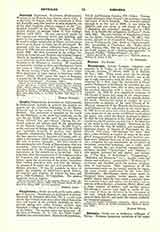

Rhesaena, titular see in Osrhoene, suffragan of Edessa. Rhesaena (numerous variations of the name appear in ancient authors) was an important town at the northern extremity of Mesopotamia near the sources of the Chaboras (now Khabor), on the way from Carrhm to Nicephorium about eighty miles from Nisibis and forty from Dara. Near by Gordian III fought the Persians in 243. Its coins show that it was a Roman colony from the time of Septimus Severus. The “Notitia dignitatum” (ed. Boecking, I, 400) represents it as under the jurisdiction of the governor or Dux of Osrhoene. Hierocles (Synecdemus, 714, 3) also locates it in this province but under the name of Theodosiopolis; it had in fact obtained the favor of Theodosius the Great and taken his name. It was fortified by Justinian. In 1393 it was nearly destroyed by Tamerlane’s troops. Today under the name of Ras-el-‘Ain, it is the capital of a caza in the vilayet of Diarbekir and has only 1500 inhabitants. Le Quien (Oriens christianus, II, 979) mentions nine bishops of Rhesaena: Antiochus, present at the Council of Nicaea (325); Eunomius, who (about 420) forced the Persians to raise the siege of the town; John, at the Council of Antioch (444); Olympius at Chalcedon (451); Andrew (about 490); Peter, exiled with Severian (518); Ascholius, his successor, a Monophysite; Daniel (550); Sebastianus (about 600), a correspondent of St. Gregory the Great. The see is again mentioned in the tenth century in a Greek “Notitiae episcopatuum” of the Patriarchate of Antioch (Vailhe, in “Echos d’Orient”, X, 94). Le Quien (ibid., 1329 and 1513) mentions two Jacobite bishops: Scalita, author of a hymn and of homilies, and Theodosius (1035). About a dozen others are known.
S. PETRIDES

